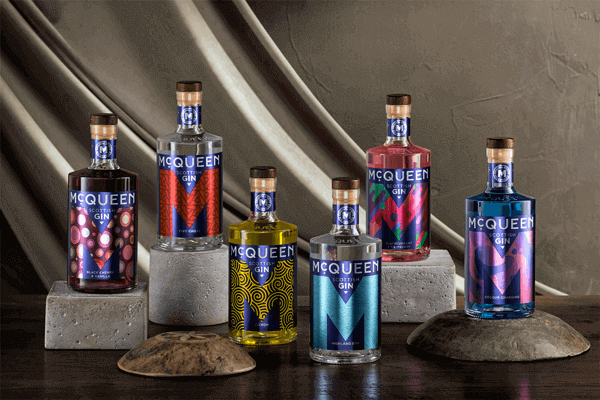“The Gin and Tonic has saved more Englishmen’s lives, and minds, than all the doctors in the Empire.” -Winston Churchill
The origins of distillation and the birth of jenever.
Juniper has been recorded as a medicinal elixir since the 12th century to cure aliments, especially relating to abdominal pains. In the 14th century, when the bubonic plague spread throughout Europe, juniper cordials and elixirs under the misguided pretence that these magical potions would ward against the plague.
The origins of a juniper based spirit, more similar to the likes of jenever, can be traced back to 16th century monks in Italy, which spread through Western Europe due to the invention of the printing press.
The origins of distillation and the birth of jenever.
Juniper has been recorded as a medicinal elixir since the 12th century to cure aliments, especially relating to abdominal pains. In the 14th century, when the bubonic plague spread throughout Europe, juniper cordials and elixirs under the misguided pretence that these magical potions would ward against the plague.
The origins of a juniper based spirit, more similar to the likes of jenever, can be traced back to 16th century monks in Italy, which spread through Western Europe due to the invention of the printing press.
Gin grows in popularity in Britain.
By the dawn of the 17th-century gin was crudely being distilled in port cities throughout the south of England such as London and Portsmouth. This was still under the pretext of its supposed health benefits; the masses enjoyed a beer or French brandy as their beverage of choice.
Gin grows in popularity in Britain.
By the dawn of the 17th-century gin was crudely being distilled in port cities throughout the south of England such as London and Portsmouth. This was still under the pretext of its supposed health benefits; the masses enjoyed a beer or French brandy as their beverage of choice.
King William of Orange enlightens the British public.
Real cultural change for gin occurred in 1689 when William of Orange arrived to take control of the throne. With his passion for jenever, he changed the perception in England and turned gin into the trendy drink which we all know and love. Gin and jenever became a patriotic drink - so much as that gin is now the national drink of England - that showed patriotism for the rightful protestant king.
King William of Orange enlightens the British public.
Real cultural change for gin occurred in 1689 when William of Orange arrived to take control of the throne. With his passion for jenever, he changed the perception in England and turned gin into the trendy drink which we all know and love. Gin and jenever became a patriotic drink - so much as that gin is now the national drink of England - that showed patriotism for the rightful protestant king.
A tax reduction leads to an increase of production.
The gin industry grew arms and legs in 1690 when the British parliament passed ‘an act of encouraging the distilling of brandy and spirits from corn; this enabled anyone to distill grain spirit. All they had to do is post a notice in public and wait ten days.
A tax reduction leads to an increase of production.
The gin industry grew arms and legs in 1690 when the British parliament passed ‘an act of encouraging the distilling of brandy and spirits from corn; this enabled anyone to distill grain spirit. All they had to do is post a notice in public and wait ten days.
The first use of the word gin is recorded.
The first recorded use of the word gin appeared, in “The Fable of the bees, or private Vices, Publick Benefits” by Bernard Mandeville. Stating, “The infamous liquor, the name of which deriv’d from juniper-berries in Dutch, is now, by frequent use… from a word of middling length shrunk into a monosyllable, intoxicating gin.”
The first use of the word gin is recorded.
The first recorded use of the word gin appeared, in “The Fable of the bees, or private Vices, Publick Benefits” by Bernard Mandeville. Stating, “The infamous liquor, the name of which deriv’d from juniper-berries in Dutch, is now, by frequent use… from a word of middling length shrunk into a monosyllable, intoxicating gin.”
Gin craze runs rampant through London.
‘London’s Gin Craze’, gin impacted the more deprived areas of London in the 18th century. With a population used to beer and other weaker alcohols, the effects on the city have been compared to the effects of crack in America. Child mortality rate rose to 75% of children would die before the age of five.
Gin craze runs rampant through London.
‘London’s Gin Craze’, gin impacted the more deprived areas of London in the 18th century. With a population used to beer and other weaker alcohols, the effects on the city have been compared to the effects of crack in America. Child mortality rate rose to 75% of children would die before the age of five.
The industry goes underground.
The 3rd Gin Act or £50 act, this introduced an annual licence fee of £50 which forced many distilleries to go underground. This ultimately proved hard to police due to many distilleries being in the back rooms of shops, hidden from the authorities.
The industry goes underground.
The 3rd Gin Act or £50 act, this introduced an annual licence fee of £50 which forced many distilleries to go underground. This ultimately proved hard to police due to many distilleries being in the back rooms of shops, hidden from the authorities.
Gins image is scrubbed up.
The first gin palace opens up in London. The 1820s saw the establishment of London’s first licensed public houses. Before Henry Fearon’s pioneering gin palace, public houses were in a poor state of repair and were converted homes, hence the name. Fearon’s palaces were lit by gas lights and their interiors furnished with polished carved mahogany; it was indeed a sign of class and sophistication at the time.
Gins image is scrubbed up.
The first gin palace opens up in London. The 1820s saw the establishment of London’s first licensed public houses. Before Henry Fearon’s pioneering gin palace, public houses were in a poor state of repair and were converted homes, hence the name. Fearon’s palaces were lit by gas lights and their interiors furnished with polished carved mahogany; it was indeed a sign of class and sophistication at the time.
The G&T is born.
As the British empire slowly started to have more control in India, London distillers soon seized the opportunity and pushed their new dry gin style on the Raj and the empire. With tonic having a medicinal purpose in treating malaria, the gin and tonic exploded across the empire. London dry gin was the preferred drink of officers. The Gentleman of the Raj preferred with medicinal flavouring such as tonic or bitters – pink gin. Gin and soda were known as the British soldier’s delight.
The G&T is born.
As the British empire slowly started to have more control in India, London distillers soon seized the opportunity and pushed their new dry gin style on the Raj and the empire. With tonic having a medicinal purpose in treating malaria, the gin and tonic exploded across the empire. London dry gin was the preferred drink of officers. The Gentleman of the Raj preferred with medicinal flavouring such as tonic or bitters – pink gin. Gin and soda were known as the British soldier’s delight.
Prohibition America drives cocktail popularity through the roof.
Prohibition America sees the birth of the speakeasy, underground bars and the cocktail era take off, especially with the American smugglers. Al Capone, who was the leader of the Chicago outfit, was rumoured to enjoy a ‘Southside’. Many of the American bartenders who were out of work descended on London and created a new wave of enthusiasm for cocktails and gin in the city.
Prohibition America drives cocktail popularity through the roof.
Prohibition America sees the birth of the speakeasy, underground bars and the cocktail era take off, especially with the American smugglers. Al Capone, who was the leader of the Chicago outfit, was rumoured to enjoy a ‘Southside’. Many of the American bartenders who were out of work descended on London and created a new wave of enthusiasm for cocktails and gin in the city.
Cosmopolitan culture takes over.
Cocktails become trendy once more and are no longer a sign of snobbery, with the popularity of American culture seeping through in British society. No longer were drinks in the UK being downed in tonic or fruit juice, we were ready for something simplistic yet elegant.
Cosmopolitan culture takes over.
Cocktails become trendy once more and are no longer a sign of snobbery, with the popularity of American culture seeping through in British society. No longer were drinks in the UK being downed in tonic or fruit juice, we were ready for something simplistic yet elegant.
The start of the craft gin revolution.
Gin slowly gains in popularity and has shaken the British aristocratic image into the trending drink for millennials to enjoy. During this period craft gin distilleries started popping up all over the country, creating a buzz and rejuvenating this historic industry. One of the main reasons for gin gaining popularity was with the government repealing the Gin Act in 2008, this allowed small scale distilleries to open up across the country. Before this, the minimum size of the still required by law was 1800 litres. Repealing the Gin Act was the spark which ignited the craft gin revolution.
The start of the craft gin revolution.
Gin slowly gains in popularity and has shaken the British aristocratic image into the trending drink for millennials to enjoy. During this period craft gin distilleries started popping up all over the country, creating a buzz and rejuvenating this historic industry. One of the main reasons for gin gaining popularity was with the government repealing the Gin Act in 2008, this allowed small scale distilleries to open up across the country. Before this, the minimum size of the still required by law was 1800 litres. Repealing the Gin Act was the spark which ignited the craft gin revolution.

The birth of a titan.
On the 28th of July 2015, Dale and Vicky registered the company. After months of research and development, McQueen Gin was born and ready to revolutionise the gin industry one sip at a time.
The birth of a titan.
On the 28th of July 2015, Dale and Vicky registered the company. After months of research and development, McQueen Gin was born and ready to revolutionise the gin industry one sip at a time.

